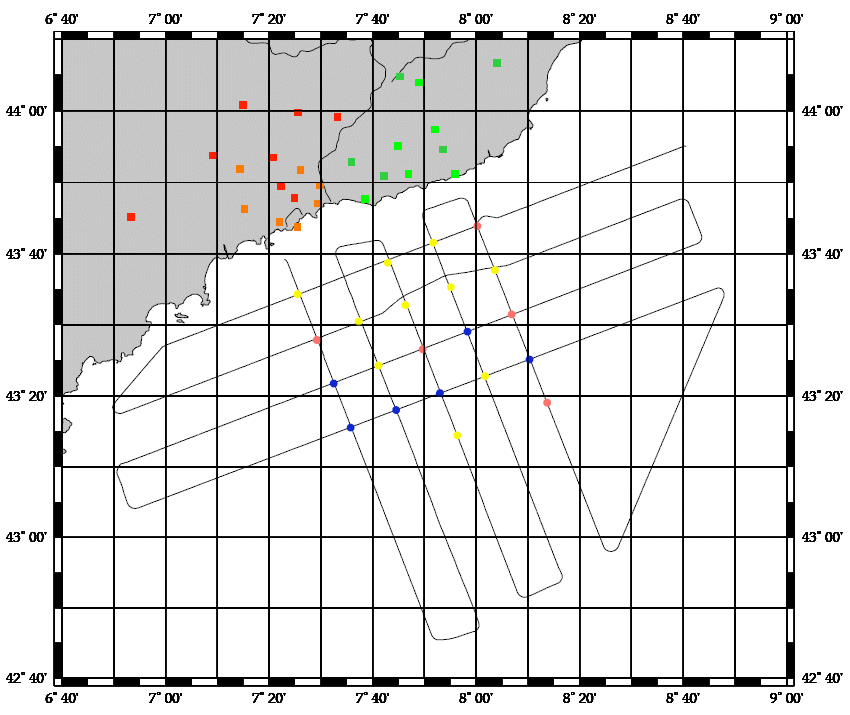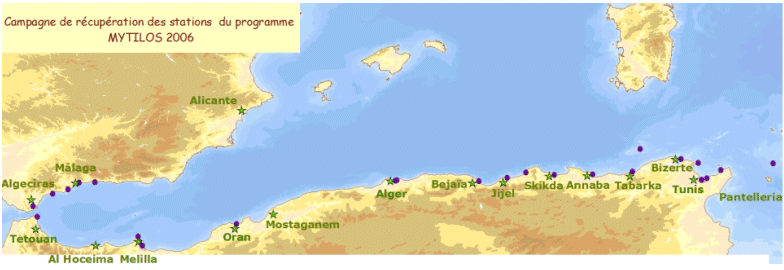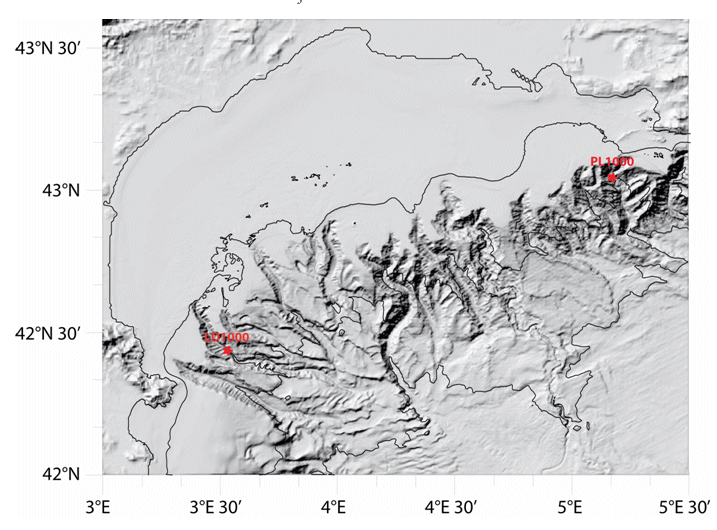Keyword
France
80 record(s)
Type of resources
Categories
Topics
INSPIRE themes
Keywords
Contact for the resource
Provided by
Years
Formats
Status
-
<p style="text-align:justify">SHOM cruise with implementation of the MVP.</p>
-
Charter cruise with the objective of validating the performance of SERCEL equipment, i.e. evaluation of different seismic devices and validating this equipment.
-
<p style="text-align:justify">The main scientific objectives of the cruises are threefold:</p> <ul> <li style="text-align: justify;">to asses the large scale circulation in the Western Basin, evaluating the water masses and the fluxes at different key point in the basin (The North Current, The East and West Corsica currents, the Balearic front, Algerian Basin). The final goal was numerical modelling assessment.</li> <li style="text-align: justify;">to identify and follow peculiar mesoscale structures such as surface eddies, modal weddies, submesoscale coherent vortices (SCV) meanders or filaments and explore the signature on the sea surface height (altimetry) and the acoustic impact (sound propagation).</li> <li style="text-align: justify;">to observe and interpret the submesoscale dynamics such ageostrophic stirring, symmetric instabilities, mixed layer instabilities, subduction and convection.</li> </ul> <p style="text-align:justify">The <strong>Protevs2015_leg1 </strong>campaign took place from the 8th to 28th of January 2015 on board of the RV <em>Pourquoi Pas?</em> in the north western mediterranean basin. It is focused on physical aspects (hydrology and dynamics). The main objective was the dynamics of the North current from its roots in the Ligurian Sea downstream to the Gulf of Lion. The surveys try to catch not only the meso-scale features but also the submesoscale associated to the the northern current or at least in its vicinity.</p> <p style="text-align:justify"> </p> <p style="text-align:justify"> </p>
-
<p>The WESTMEDFLUX-2 oceanographic cruise is part of the project that studies the presence of thermal anomalies in the ocean-continent transitions of the Western Mediterranean. The proposed cruise follows WESTMEDFLUX that took place in 2016 and that resulted in mapping regional trends of thermicity in in the Gulf of Lion, offshore Baleares and Sardinia. It also pointed out to the existence of several local heat flow anomalies in particular on the South Balearic slope and deep basin. In the deep oceanic basin, strong anomalies seem to be merely associated to salt diapiric structures, but on the rifted continent and transition zone, other heat sink and sources are suggested (e.g., bottom water currents, slope instabilities and focused fluid migrations). In order to better understand the source of these anomalies and the link with the crustal nature and structuring of the margin, we propose on the South-Balearic margin additional close-spaced heat flow measurement, sediment coring and dredging sites. Sediment cores will be used for turbidite and contourite studies and for geochemical analysis of pore fluids. The dredging operations aim an estimation of age and nature of volcanic rock material from sea mounts.</p>
-
<p>Sea recovery of all components of a stratospheric balloon: balloon envelope, parachutes, and gondolas. Test of new gamma detectors and characterization of solar panels for the Strateole project. There has been no work done at sea after balloon fly. The balloon flight took place. The climb path was consistent with the expected. However the ceiling track was a little south and a little slower than expected. The ball has arrived above the sea but too south. Down a bit low, he found the westerly winds that brought him back to earth. Separating late flight and recovery have made campaigning in the Basque country.</p>
-
Acoustic measurements.
-

Characterizing the variability of hydrological and current features and particulate fluxes on the continental rise of the Gulf of Lion and in the deep convection zone. Monitoring of deep benthic communities in the western canyons and on the continental rise of the Gulf of Lion.
-

Assessment of chemical contamination in coastal water masses (Spain, Morocco, Tunisia, Sicily canal), using artificial stations of mussels. The MYTILOS1 cruise aimed to utilize the RINBIO network methodology around the western Mediterranean, in the northern part of the NW Basin. Experiments run in the French Mediterranean since 1996 by IFREMER were to be extended to Southern Mediterranean coasts, i.e. Spanish, Moroccan, Algerian and Tunisian coasts, as well as the Sicily Canal in Italy, on the basis of a standardized protocol. The data from MYTILOS2 cruise will supplement those obtained in 2004 and 2005 during the RINBIOC1 and MYTILOS1 cruises by including the coasts of North Africa, Southern Spain and the island of Pantelleria. In addition, the results will be used to complement the chemical contamination budget drawn up in the framework of the European Water Framework Directive's implementation. The survey was based on 2 major actions: 1) Artificial mussel stations were placed and recovered along a shoreline between Malaga (Spain) and Sicily (Italy), including Morocco, Algeria and Tunisia. 2) Sediment samples in addition to mussels samples were taken upon the partners' request. This falls under the MEDICIS project.
-
<p>The purpose of WestMedFlux is to study thermal fields in ocean-continent transition zones in the Western Mediterranean, and the role of fluids and salt diapirs on the thermal field.</p>
-

Characterizing the variability of hydrological and current measurement features and particulate fluxes in two canyons of Le Planier (station PL1000) and Lacaze-Duthiers (station LD1000) located at the easternmost and westernmost tips of the Gulf of Lion.
 Catálogo de datos del IEO
Catálogo de datos del IEO